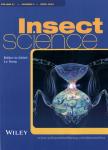Surface area-volume ratios in insects
Surface area-volume ratios in insects作者机构:Department of Biology Technische Universitat Darmstadt Schnittspahnstrasse 3 D-64287 Darmstadt Germany
出 版 物:《Insect Science》 (昆虫科学(英文版))
年 卷 期:2017年第24卷第5期
页 面:829-841页
核心收录:
学科分类:0710[理学-生物学] 0830[工学-环境科学与工程(可授工学、理学、农学学位)] 081702[工学-化学工艺] 07[理学] 08[工学] 0817[工学-化学工程与技术] 0904[农学-植物保护] 0901[农学-作物学] 0713[理学-生态学]
基 金:funded by the DFG Priority Program 1374 “Infrastructure-Biodiversity-Exploratories” supported by a scholarship for undergraduate students provided by the German National Academic Foundation (Studienstiftung des deutschen Volkes) the BMBF-project ASTOR
主 题:body size body shape 3D surface imaging sphericity structured light water loss
摘 要:Body mass, volume and surface area are important for many aspects of the physiology and performance of species. Whereas body mass scaling received a lot of attention in the literature, surface areas of animals have not been measured explicitly in this context. We quantified surface area-volume (SA/V) ratios for the first time using 3D surface models based on a structured light scanning method for 126 species of pollinating insects from 4 orders (Diptera, Hymenoptera, Lepidoptera, and Coleoptera). Water loss of 67 species was measured gravimetrically at very dry conditions for 2 h at 15 and 30 ℃ to demonstrate the applicability of the new 3D surface measurements and relevance for predicting the performance of insects. Quantified SA/V ratios significantly explained the variation in water loss across species, both directly or after accounting for isometric scaling (residuals of the SA/V - mass2/3 relationship). Small insects with a proportionally larger surface area had the highest water loss rates. Surface scans of insects to quantify allometric SA/Vratios thus provide a promising method to predict physiological responses, improving the potential of body mass isometry alone that assume geometric similarity.



